Transport yourself to Italy, while staying at home in your own kitchen, by making this wonderfully decadent bucatini cacio e pepe. This delicious Roman pasta is full of rich buttery flavor, subtle heat from fresh cracked pepper, and richness from freshly grated pecorino romano cheese. The recipe includes only 5 ingredients and is incredibly easy to throw together any day of the week! Pair your meal with a fruity and flavorful wine and you’ll truly feel like you’re immersed in Italian culture all the way from the opposite side of the world!
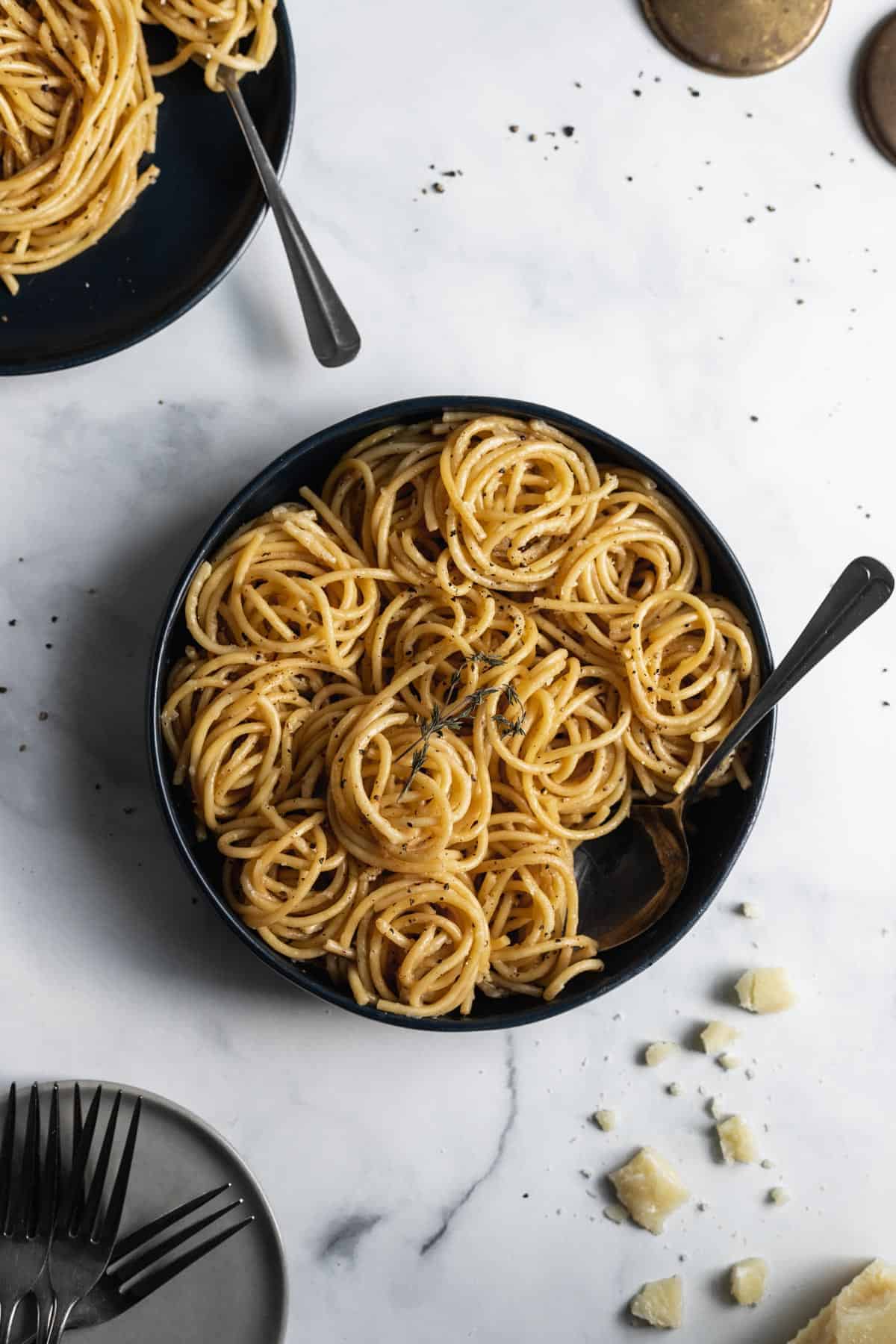
Jump to:
📋 About the Recipe
Bucatini noodles are similar to spaghetti, but are tubular with a hole through the middle. This hole allows the pasta to soak up the rich, creamy sauce as it penetrates the inside of the noodle. Each bite is filled with nutty, cheesy flavor and a delicate freshness from the addition of grated lemon zest.
Due to the simplicity of bucatini cacio e pepe, it’s easy to transform for different tastes and occasions. If making this for younger kids as a quick weeknight meal or if you are not a fan of a little heat, add less pepper or omit it altogether (although the pepper is truly what makes it “cacio e pepe”).
You can also "dress the pasta up" for a date night by making appetizers before dinner, pairing it with your favorite wine or cocktail, or adding a more upscale protein on top, such as sliced filet mignon or lobster tail.
And, if you want to bulk up the dish even more, you can add plenty of other ingredients in just a few simple steps. Sear a chicken breast or shrimp in a skillet and add it on top of the pasta or simply stir fry a few veggies right before adding the pepper, lemon zest, and noodles to the melted butter.
For a richer, saucier pasta, try this one pot lemon ricotta pasta or chicken feta pasta!
Looking for more Roman and Mediterranean inspired pastas, like this one? Check these out!
🛒 Ingredients
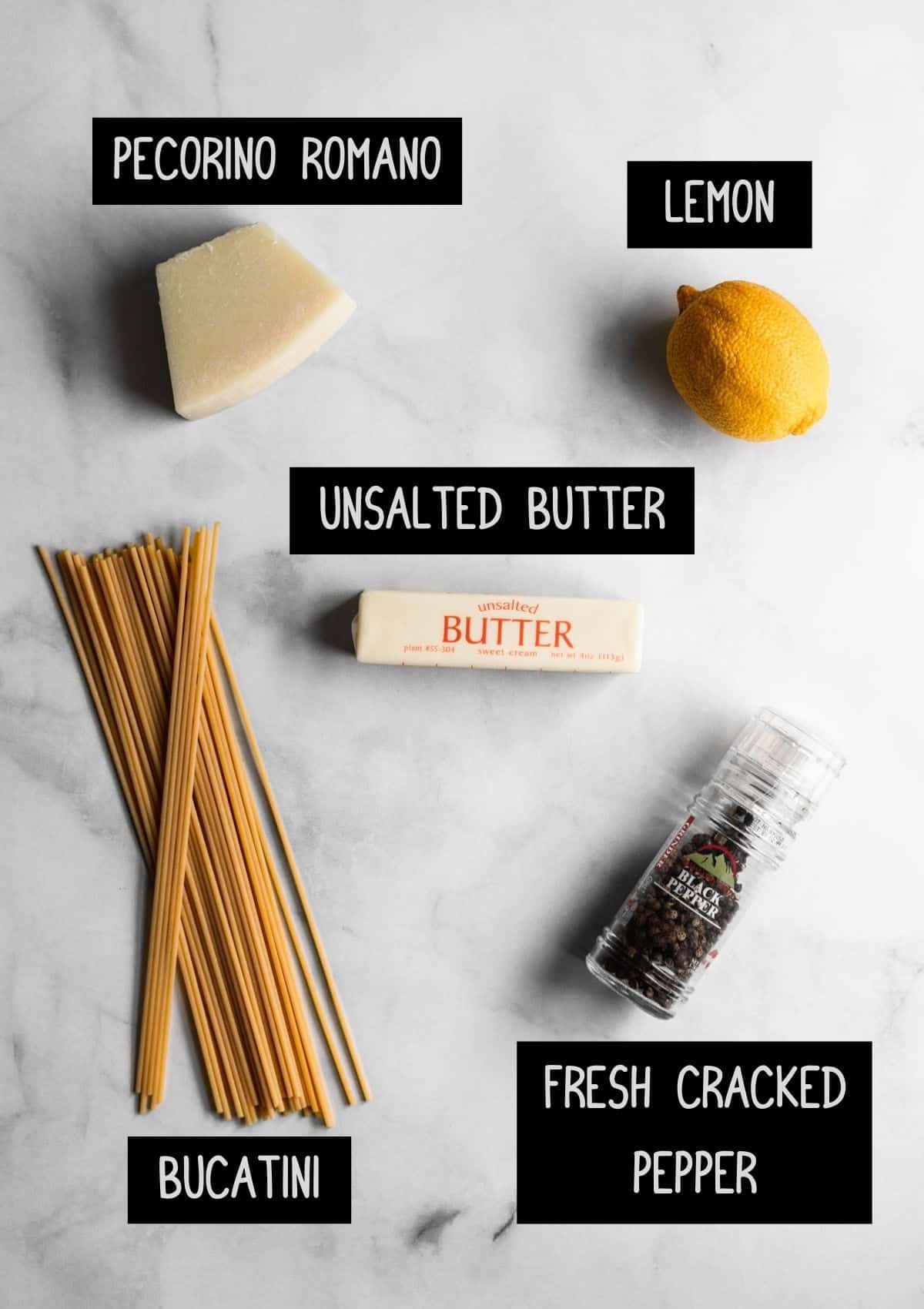
A few notes about the ingredients:
- Lemon zest is not typically included in authentic cacio e pepe, but with the butter and cheese, I felt that it’d help lighten it up and add a fresh quality to it. If you’d prefer to leave it out, it’ll taste just as delicious!
- I often like to combine a ½ cup pecorino romano and a ½ cup grana padano parmesan. However, to keep the ingredient list simple, I’ve only included the pecorino. The difference is subtle, so if you only want to buy one, I’d recommend just buying pecorino.
- 6 tablespoons of butter may seem like a lot, but it’s truly the perfect amount for a rich and creamy pasta sauce. However, if you’d like to lighten the dish a bit, you can use a combination of butter and olive oil instead.
📓 Instructions
Fill a large pot with water and set it over medium heat on the stove. Once the water starts to boil, season it liberally with salt. Make sure to salt it well because this is where the pasta absorbs most of the flavor.
Then, add the bucatini or noodles of choice. Cook the noodles about a minute less than the package instructions.
While the pasta boils, prepare and cut any additional proteins or vegetables if you choose to include them.
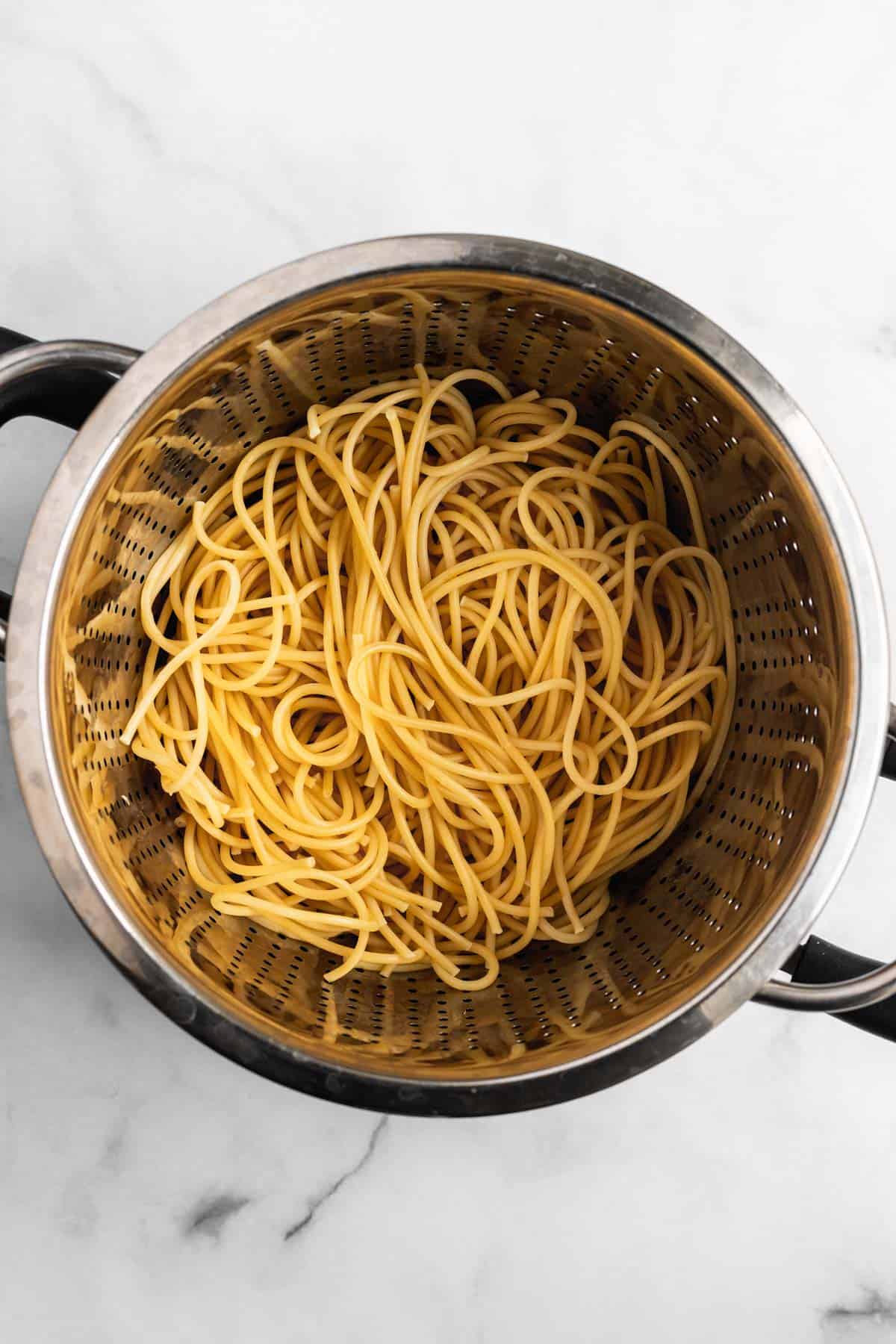
Once the noodles are done cooking, reserve about a cup of the pasta water and then drain the rest. (If you forget to reserve the water, check out the added tip below!)
In the empty pasta pot, melt the butter over medium-low to medium heat. Once the butter is almost completely melted, cook the protein/veggies until completely cooked through (optional) or skip right to adding the freshly grated pepper and lemon zest.
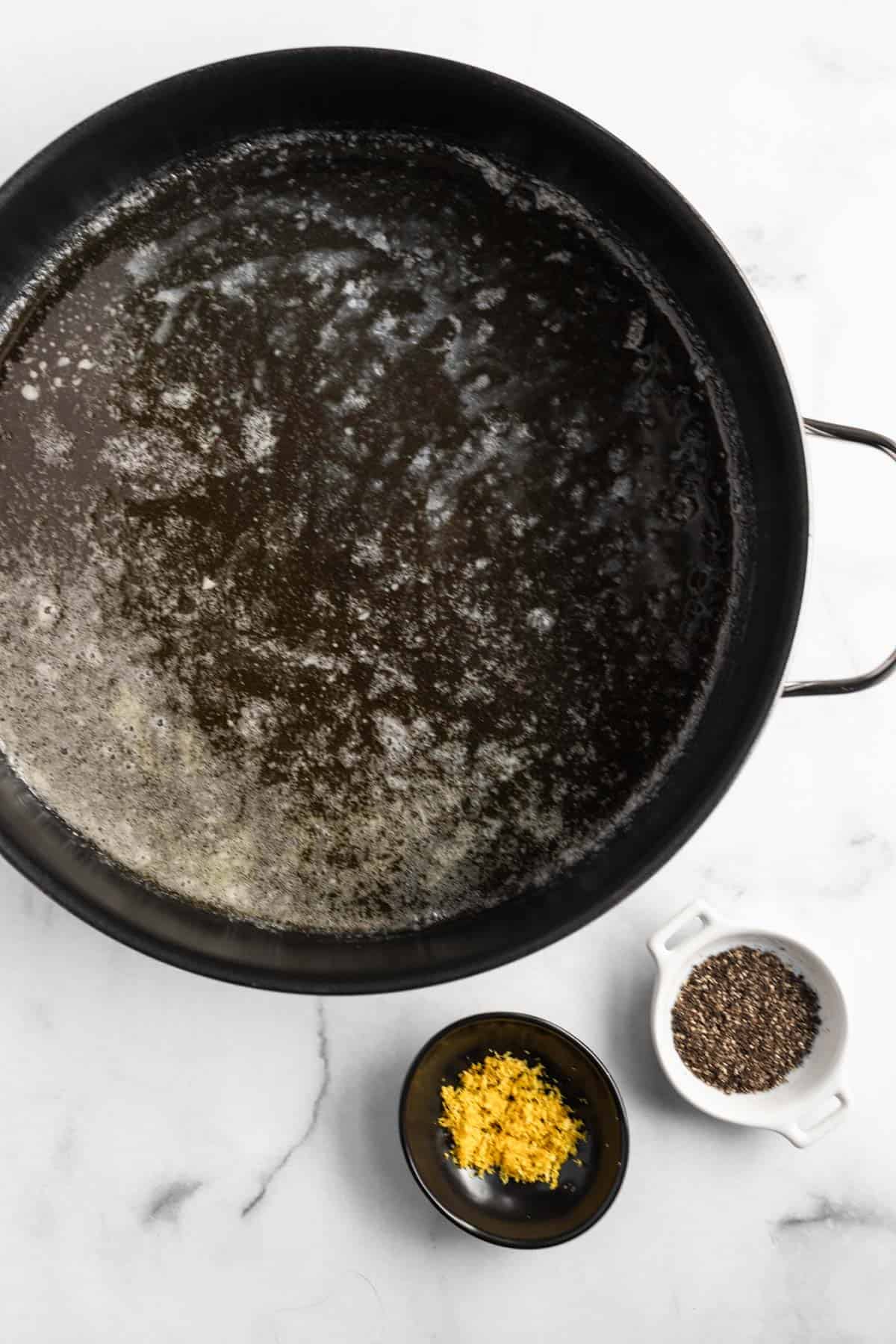
After the pepper and zest are added, allow them to incorporate and toast in the butter for about a minute. Then, add the pasta and a ½ cup of pasta water to the pot.
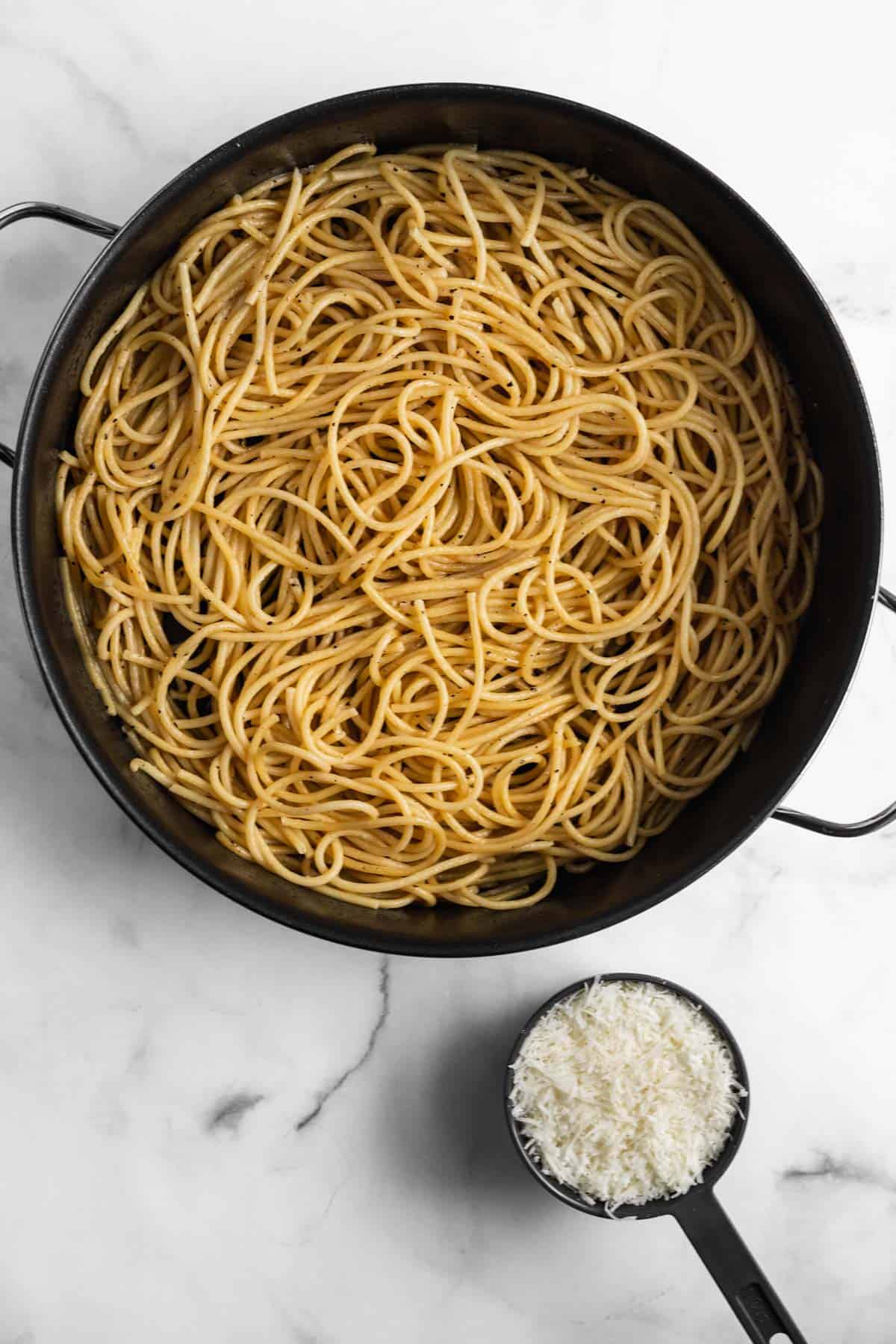
Reduce the heat to low, add the grated cheese, and gently stir until everything combines to cover the pasta in a smooth silky sauce. If the pasta seems too dry or sticky, add a bit more pasta water in small increments until you reach the consistency you desire.
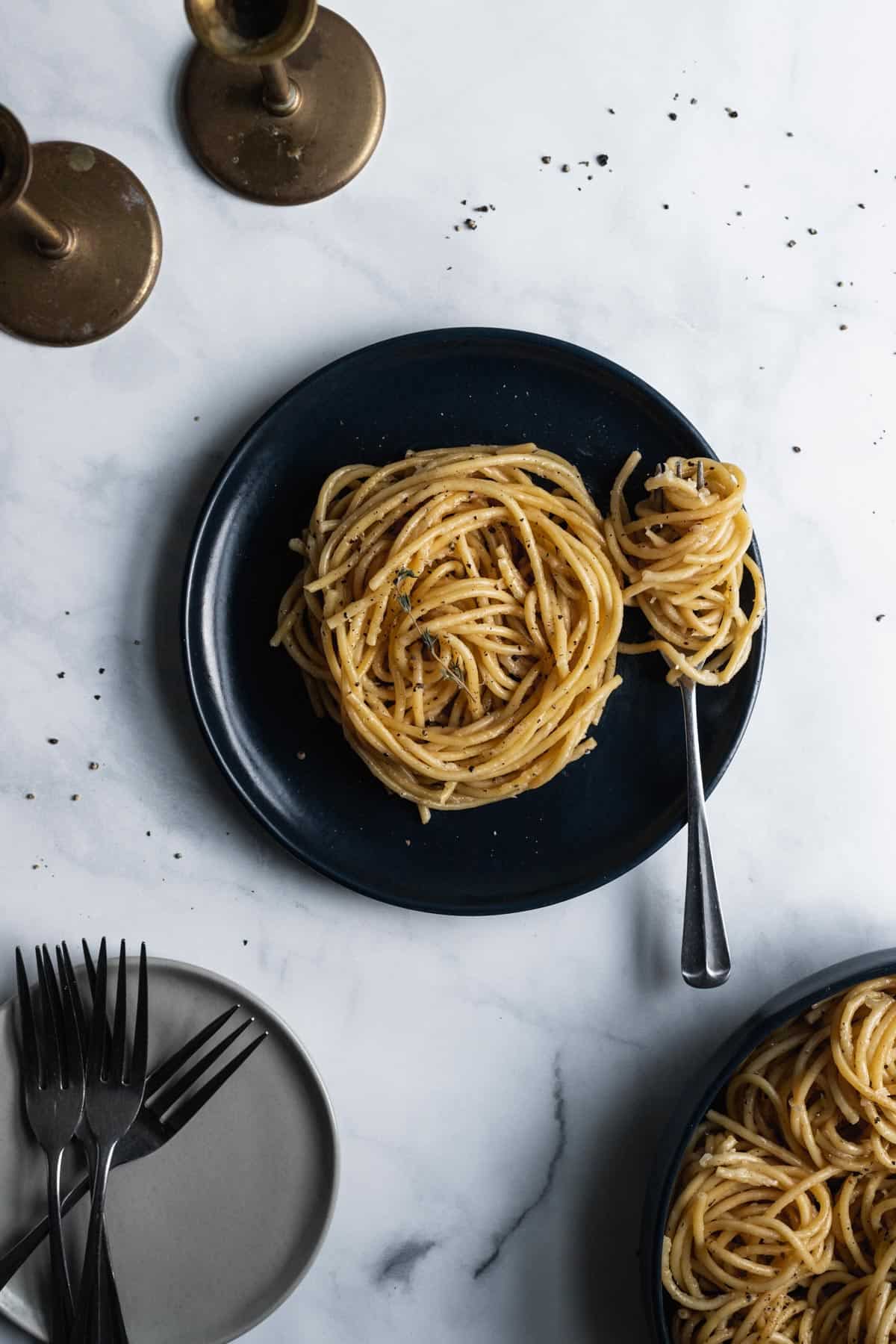
Check out the how-to steps in this web story!
🔍 FAQs
It is pronounced “kah-cheeo ay pay-pay.” It is translated from Italian as “cheese and pepper,” which is a pretty fitting description of this Roman pasta that is quite literally made from noodles, butter, LOADS of shredded cheese, and fresh ground pepper.
If your bucatini cacio e pepe has clumped, instead of forming a smooth creamy sauce, chances are you grated the cheese with larger holes than intended. When the cheese has more surface area, it tends to stick together and melt slower, causing it to stick instead of simply melting. You can try to fix clumping by adding a touch more pasta water to help smoothly melt the cheese.
Due to this Roman pasta’s simple nature, nearly any wine would pair well with it. If you like reds, try a cabernet sauvignon. The deep fruity flavors of the cab bring out the subtle qualities of the cheese and mimics the richness of the freshly cracked pepper. And if you like whites, try either a riesling or pinot grigio, both of which have an acidity to offset the creamy cheese, but also have the flavor power to offset the heat of the pepper.
In the ingredient list, there is a list of options to “beef up” a traditional bucatini cacio e pepe. Since traditionally, it is served as just pasta, I often like to include additional vegetables or protein to make the meal more complete and even a bit healthier. You can also serve homemade garlic bread with your meal, as well as a fresh garden salad.
💭 One More Tip
If you’re like me and often forget to reserve pasta water before dumping it down the drain, there’s a quick trick you can follow to get the same great results! In place of the pasta water, add ¼ teaspoon cornstarch and ¼ teaspoon salt to 1 cup of water. Follow the instructions above and add half of the mixture to the pasta when it says to add the pasta water. You can add more in small increments to get the texture you desire. This combination of corn starch, salt, and water closely resembles starchy pasta water and provides the same creamy, luscious consistency to any pasta sauce.
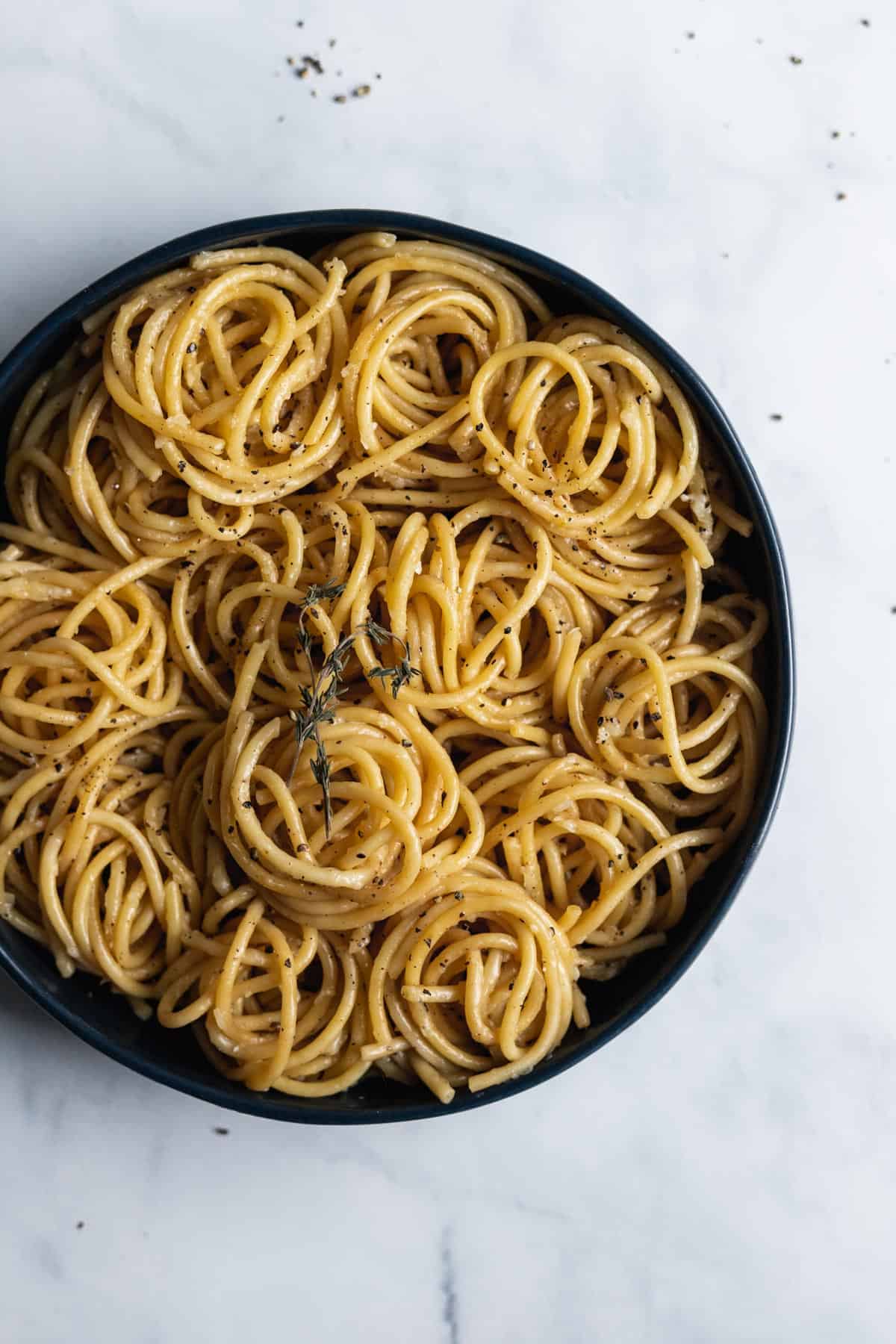
🍴 Related Recipes
Share your cooking with me! If you make this recipe, I'd love to know! Tag @yourhomemadehealthy on Instagram or leave a comment with a rating and some feedback at the bottom of this page!
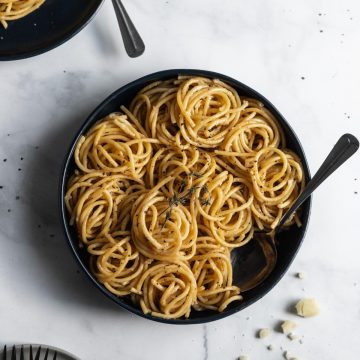
Bucatini Cacio e Pepe
Equipment
Ingredients
- 12 to 16 ounces bucatini, spaghetti, linguine, capellini, or noodle of choice
- 6 tablespoon unsalted butter
- 1 teaspoon fresh cracked pepper more or less depending on taste
- ¼ teaspoon lemon zest
- 1 cup freshly grated pecorino romano cheese grated with the finer shred grate
Optional Additions:
- chicken, steak, shrimp, tofu, or protein of choice
- spinach, asparagus, broccoli, mushrooms, cherry tomatoes, sun-dried tomatoes, peas or vegetable of choice
Instructions
- Fill a large pot with water and set it over medium heat on the stove. Once the water starts to boil, season it liberally with salt. Make sure to salt it well because this is where the pasta absorbs most of the flavor.
- Then, add the bucatini or noodle of choice. Cook the noodles about a minute less than the package instructions.
- While the pasta boils, prepare and cut any additional proteins or vegetables if you choose to include them.
- Once the noodles are done cooking, reserve about a cup of the pasta water and then drain the rest. (If you forget to reserve the water, check out the tip below!)
- In the empty pasta pot, melt the butter over medium-low to medium heat. Once the butter is almost completely melted, cook the protein/veggies until completely cooked through (optional) or skip right to adding the freshly grated pepper and lemon zest.
- After the pepper and zest are added, allow them to incorporate and toast in the butter for about a minute. Then, add the pasta and a ½ cup of pasta water to the pot.
- Reduce the heat to low, add the grated cheese, and gently stir until everything combines to coat the pasta in a smooth silky sauce. If the pasta seems too dry or sticky, add a bit more pasta water in small increments until you reach the consistency you desire.
Notes
- Lemon zest is not typically included in authentic cacio e pepe, but with the amount of butter and cheese, I felt that it’d help lighten it up and add a fresh quality to it. If you’d prefer to leave it out, it’ll taste just as delicious!
- I often like to combine a ½ cup pecorino romano and a ½ cup grana padano parmesan. However, to keep the ingredient list simple, I’ve only included the pecorino. The difference is subtle, so if you only want to buy one, I’d recommend just buying pecorino.
- 6 tablespoons of butter may seem like a lot, but it’s truly the perfect amount for a rich and creamy pasta sauce. However, if you’d like to lighten the dish a bit, you can use a combination of butter and olive oil instead.
- If you forgot to reserve pasta water before dumping it down the drain, there’s a quick trick you can follow to get the same great results! In place of the pasta water, add ¼ teaspoon cornstarch and ¼ teaspoon salt to 1 cup of water. Follow the instructions above and add half of the mixture to the pasta when it says to add the pasta water. You can add more in small increments to get the texture you desire.
Nutrition
Want more recipes like this delivered right to your inbox? Be sure to subscribe below and never miss a thing!

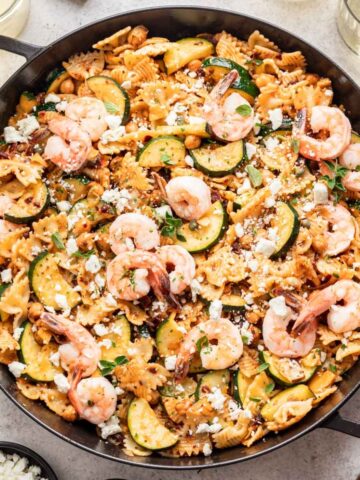
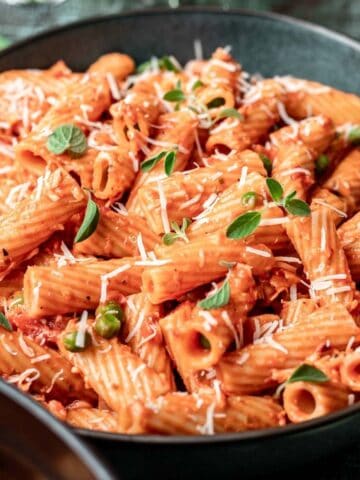
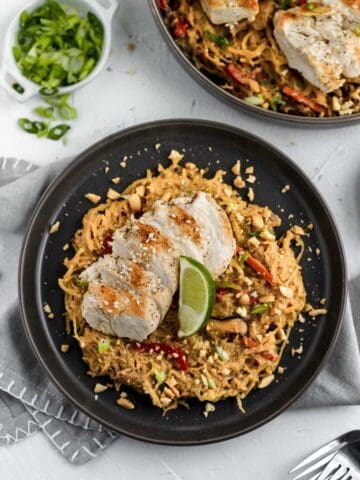
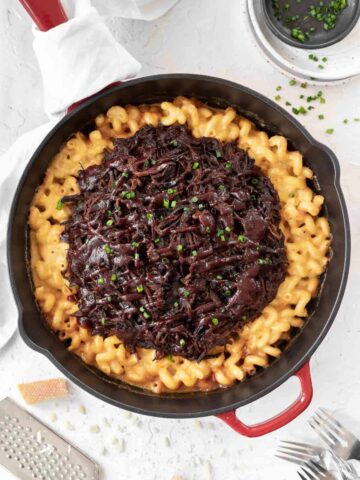
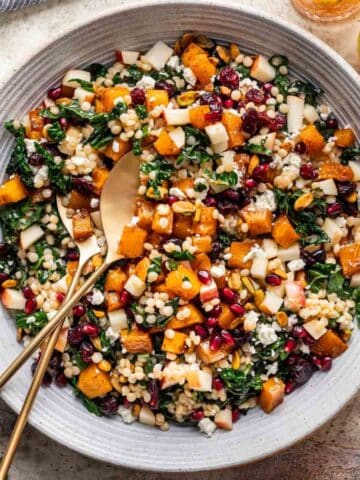

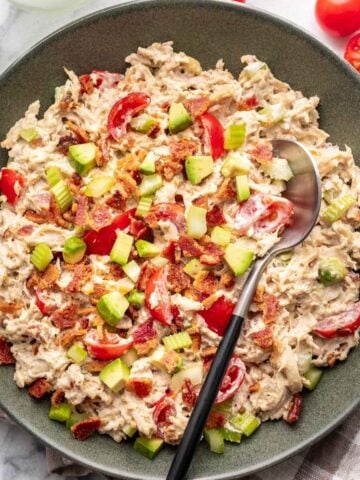
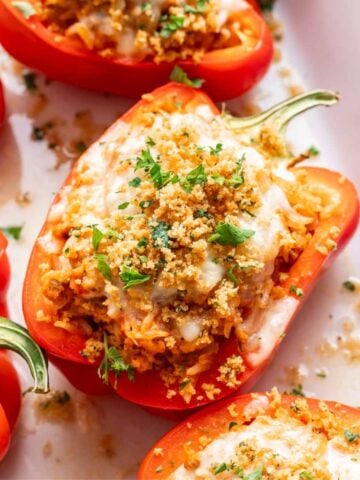

Marni says
Had it now a few times as a weekly regular. What a great, easy meal!! I love adding different veggies each time I make it.
Alana Lieberman says
So happy you like it! The veggies are definitely a great addition 🙂
Nora says
This was absolutely delicious and so easy to make! It will definitely become a staple in my cooking!
Alana Lieberman says
Thanks Nora! Happy to help make your dinners a bit easier 🙂
Pauline says
Great recipe. I have made but not with the lemon. Think I will definitely add it the next time I make this wonder recipe.
Pauline says
Great recipe. I’ve made it but without the lemon. Seems like a wonderful addition.
Alana Lieberman says
Thank you, it truly makes it taste a bit lighter and fresher!
Alana Lieberman says
I think you'll really like it with the lemon 🙂 Let me know how it goes!